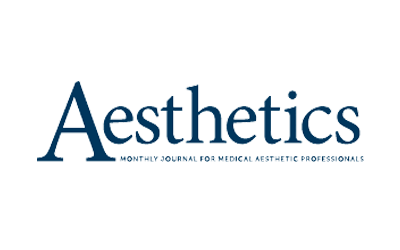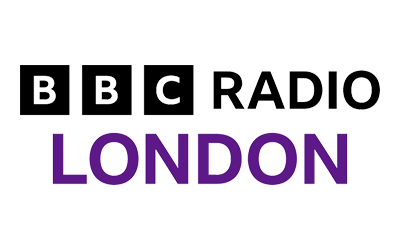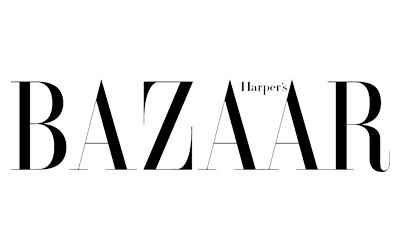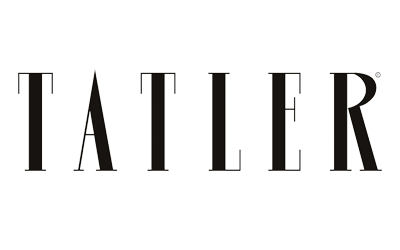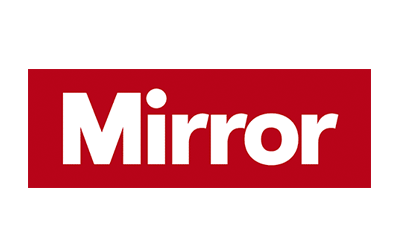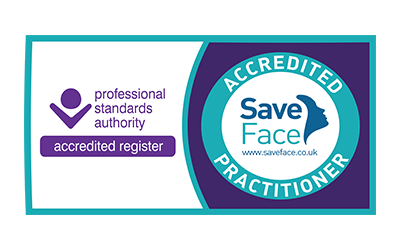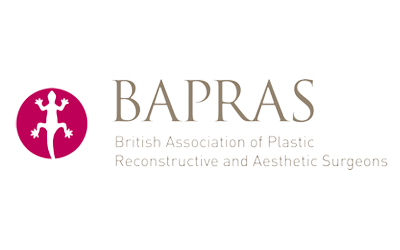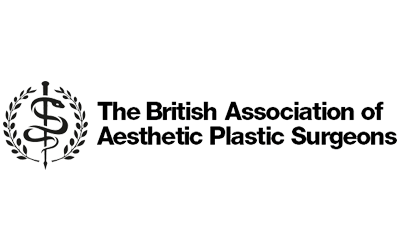The V Beam laser is designed to safely treat a multitude of vascular skin conditions such as facial spider veins and rosacea. Here are some of the most frequently asked questions we get asked at our V Beam laser consultations. If you’d like any more information, call 02037 335839 to speak to one of the team or arrange a consultation.
Quick Links
V Beam FAQs
Pulse dye laser (PDL) is a type of laser that transmits energy into tissues. Pulsed dye lasers deliver an intense but gentle burst of light into selectively targeted areas of the skin. In our clinics we have the use of two proprietary types of Pulse Dye lasers, The V-beam laser (Candela/Syneron Corporation) and the Harmony AFT Cooled VP laser (Alma Lasers).
Telangiectasias – commonly known as facial spider veins or broken blood vessels. Rosacea (red face) – affecting the skin of the face around the nose, chin, and cheeks causing a blush or sunburned look. Angiomas – small red spots which may be slightly raised or just beneath the surface of the skin. Port Wine Stain Birthmarks – vascular lesions that grow rapidly after birth and may impair the function of another organ. Scars – red raised scars that are often caused by surgery, trauma, or burns. Stretch Marks – ‘new’ red stretch marks, frequently appearing after pregnancy over the stomach, thighs, buttocks, and lower back. Skin Rejuvination – The Vbeam can be used as part of a program for total skin Rejuvenation. Psoriasis – Certain forms of Psoriasis respond very well. Poikiloderma of Civatte – a distinct patchy, uneven red/brown coloring of the neck. Sunspots and bruises.
Laser are energy devices which emit beams of light energy called laser beams. There are many different types of laser devices. Most lasers are differentiated through the type of source they use as well as their wavelength. The wavelength of any medical laser determines it specific attraction to certain elements within the tissues. Due to the specific wavelength of the Pulse Dye laser, it has a particular and specific attraction to seek out and target oxyhaemoglobin (found within the red blood cells in vessels of the skin), as well as melanin (a skin pigment). This means that the laser beam energy is able to penetrate through the surface of the skin, without disrupting the surface of the skin or affecting other elements, and is only ‘absorbed’ by these targets. When the laser energy is ‘absorbed’ by these specific elements, it results in a localised profound heat build-up that, leads to the localised destruction of these elements within that point. The high attraction of the Pulse Dye laser to the above targets makes it therefore perfectly suited to the treatment of the various aforementioned skin conditions through a process which is medically termed selective ‘Photothermolysis’.
The word photothermolysis comes from three Greek root words – ‘photo’ meaning light, ‘thermo’ meaning heat, and ‘lysis’ meaning destruction. Selective photothermolysis refers to the precise targeting of a structure or tissue using a specific wavelength of light with the intention of absorbing energy into that area. The energy that is absorbed produces sufficient heat to damage the target while allowing the surrounding area to remain relatively untouched.
Provided you suffer with one of the conditions that are listed in the “Commonly, what conditions can Pulse Dye Lasers treat?” then you are likely to be a suitable candidate. However it is important to know that the Pulse Dye laser is not recommended for patients who have darker skin as their higher skin pigment will act as a barrier and mean the laser will be less effective at targeting the desired deeper blood vessels of the lesion. The Pulse Dye Laser in these cases may also increase unwanted darkening of the skin. You must be aware that the penetration depth of the Pulse Dye laser is limited to blood vessels which are situated up to 1.5 mm in depth. Any vessels deeper than this will probably not respond to therapy. Moreover ‘blue’ vessels may also not respond as well as red ones due to their deeper location. Larger blood vessels such as those found in leg veins also do not respond as well with the Pulse Dye laser.
The appearance of redness in any area of the body is usually caused by the presence or flow of blood travelling through a network of multiple blood vessels within the skin. In general, the greater the flow of blood in any given area, the redder the appearance of the skin. Our normal network of blood vessels is usually situated deep within the skin thereby limiting the appearance of excessive redness, even in higher flow states. When however there are aberrant, localised, or broken small blood vessels much more superficially on the surface of the skin (termed broken capillaries/veins or spider veins, or angiomas), then these allow blood to flow closer to the skin surface thereby giving rise to the appearance of excessive redness. The reason such vessels develop in any individual is usually determined through genetic or inherited causes. However sometimes medical conditions can also give rise to this, such as with Rosacea.
We know that redness in any area is due to an increase of the flow of blood in the superficial portions of the skin. The V-Beam reduces this redness by coagulating or sealing off blood vessels, close to the surface of the skin. By targeting the oxyhaemoglobin in blood cells within the blood vessel, heat damage occurs from within the blood vessel, leading to the shrinkage or coagulation of the blood vessel and thereby stopping the blood flow at that point. The blood flow subsequently gets diverted harmlessly through to the deeper blood vessels thereby effectively reducing any excessive redness in the affected skin.
Initially you will be assessed by our practitioner and the procedure explained to you. Your practitioner will ensure you are as comfortable as possible before the treatment whilst the treatment is performed with you reclined or lying down, depending on the area being treated. The Pulse Dye laser will then be calibrated and the parameters of the treatment will be set based on the speci?c condition being treated. These parameters will be individually set to maximize the results you will get. During any laser treatment all people within the laser room, including the patients, will be required to wear laser eye protection. A small laser test patch to an area of the lesion may then be performed to confirm the correct treatment settings. In most cases, Pulse Dye laser treatment can be performed on the skin without anaesthetic. For more extensive treatments however, for example in the treatment of facial port wine stains or extensive broken capillaries on the face, a local anaesthetic may be required. Local anaesthetic of the skin can also be performed by injection/nerve block or by applying topical local anaesthetic prior to treatment. This will be discussed with you beforehand. The laser energy is delivered in short pulses of light. Before each pulse, you’ll notice the applicator tip feeling quite cold. This not only slightly numbs the area but also helps reduce any resulting swelling. The pulse of the laser is usually described as that of a flicking sensation with some associated heat being felt.
In general, treatments using the Pulse Dye lasers that we incorporate into our clinics are usually well tolerated. One of the main reasons’ is because of the inbuilt cooling devices within these machines. These methods effectively cool the skin just before the laser pulse is delivered. This significantly increases comfort during treatment, as well as protects the skin to minimize side effects like redness, swelling or blister/scab formation. As a result, the feeling most patients report during any treatment is usually that of a slight flicking or mildly stinging sensation. Due to the use of the cooling methods, no anaesthetics are therefore usually required. Nonetheless, in some instances, a topical cream anaesthetic can be applied 30-45 minutes prior to treatment if requested. In some instances we may also deliver a test laser pulse on a small area before the entire area is treated in order to evaluate your pain tolerance. We will of course discuss all these options with you prior to treatment. Applying ice packs after treatment can help alleviate any discomfort experienced during the procedure.
The duration of your laser treatment depends on the size of the area you wish to have treated. Most treatments last between 15-20 minutes.
The recovery period will usually depend on the total level of energy applied, the condition that is being treated, as well as to the individual characteristics such as skin type. As a result there is a range in the recovery that will vary from no recovery period to 2 weeks. Some patients may experience bruising or redness that lasts for several days up to several weeks, while others may only have slight redness for a few hours.
After any laser session, the skin will usually appear red and slightly swollen. In treatments for the improvement of skin pigmentation, the pigmented area appears somewhat darker straight away. Occasionally a scab may also form and take about one week for this to fall off. In treatments for larger calibre veins, higher energy settings may be required which may result in some bruising. The bruising in these instances can take anywhere from one to two weeks to resolve, but the results from these higher energy treatments are usually more effective and require fewer sessions. Conversely although lower energy treatments are less likely to bruise, they usually require more treatment sessions to improve the problem. This of course may be more preferable to the patient. We will discuss these options with you and together we will make a treatment plan that is most suitable for you.
Yes. In fact, Pulsed dye lasers have a well-documented history of safely and effectively treating vascular lesions such as port wine stain birthmarks in infants and young children for more than 20 years. The safety of our Pulse Dye laser is also enhanced during treatment, through in built cooling methods and devices, which minimise any discomfort and protect the skin from any adverse heat effects during treatment.
The results of any treatment will depend on the nature and extent of the problem. If for example small spider veins are treated you may find that these disappear immediately after treatment. In other situations however where more extensive and significant lesions exist, it may take longer. The lightening of these lesions is usually a gradual process and it can therefore take up to 3 months after the final treatments for the full effect to be seen. These will be discussed with you at your consultation.
The V-Beam laser is termed a ‘non-ablative’ laser. This means that this type of laser does not affect the top surface layer of the skin (the epidermis) but actually does its work at deeper levels where the source of the problem lies. There is therefore no cutting, burning or removal of skin as with ablative lasers. Nonetheless in rare circumstances where very high energy levels are required some heat dissipation from the deeper layers may find its way to the surface thereby affecting the surface of the skin and resulting in some superficial blistering and very rarely, scarring (a form of collateral damage). Every effort will be taken to minimise such a side effect from occurring.
The attraction of the Pulse Dye laser wavelength to melanin also allows it to treat various pigmentation problems in the skin. However, as this wavelength does not penetrate very deeply beneath the skin, it tends to work best therefore on mainly superficial skin pigmentation problems commonly known as freckles, sunspots, solar lentigos and or ‘cafe au lait’ macules. Although some superficial freckles may therefore be treated with the Pulse Dye you must understand that the nature of freckles can vary and that some components of these freckles may be located at deeper levels within the skin. As a result, the Pulse Dye laser may therefore not be able to penetrate deep enough to be effective in such cases. In these circumstances other treatments such as Intense pulsed light (IPL), Ruby laser or chemical peels may be more appropriate. This will be discussed at your consultation.
Yes. Bruising is usually caused by blood that has escaped from a ruptured or injured blood vessel and has seeped into the surrounding skin tissue, e.g. after a botox injection some bruising can occasionally be seen. In these situations the Pulse Dye laser will target this blood and dissipate the bruising. Many times one treatment will be enough to help resolve the bruising. This will be discussed with you before your treatment.
Firstly, it is important to understand that there is currently no method or therapy that will completely remove scars or stretch marks. However that is not to say that some improvement cannot be attained. Although it is not known exactly how the wavelength of the pulsed dye laser works to help reduce the redness and improve the pliability of hypertrophic and keloid scars, it is suggested that the laser probably affects the underlying blood vessel network of the scar and therefore disrupts its’ collagen activity. Although the Pulse Dye laser is not effective in treating pale stretch marks, red stretch marks however can be improved with this laser by hastening the lightening or whitening of the stretch mark. Unfortunately the Pulse Dye laser will not affect the actual size or width of the stretch mark and is only useful in making it less obvious and improving the blending of the stretch mark with its surrounding skin. Furthermore, you need to realise that multiple treatments are usually necessary to achieve such improvement; the amount of improvement depends on the size and severity of the scar or stretch mark. Most patients can notice improvements 6-8 weeks after their first treatment. Other lasers such as the Starlux 1540 may also be able to further improve the appearance of stretch marks. For other patients however, who have significant stretch marks and skin laxity of the lower abdomen (such as post partum or after weight loss) they are likely to have much more benefit from an abdominoplasty or tummy tuck procedure. This of course will be discussed with you at your consultation.
Generally speaking, leg veins are best treated with sclerotherapy (injections) or surgery. This is because leg veins are usually much larger and situated much deeper beneath the skin. It is unlikely therefore that the wavelength of the Pulse Dye laser will be able to penetrate to that depth or deal with their associated increased blood flow. Moreover with leg veins there is usually a deeper more involved underlying problem arising from larger varicose veins which can ‘feed’ the more superficial smaller spider veins. In these instances it is best to deal with these varicose veins prior to dealing with the superficial veins. This will be discussed with you at the consultation.
For leg spider veins, Sclero or injection therapy may be used. Although useful, it can however cause hyperpigmentation or localised discoloration in some cases, which may last from 6 weeks to 24 months. Furthermore it can also be uncomfortable postoperatively, and in rare situations cause superficial ulcerations and scarring. For other types of vascular lesions, such as Port Wine Stain birthmarks, stretch marks, scars, facial spider veins or warts electrocautery, cryotherapy (freezing), or tattooing can been used. These procedures may however be accompanied with possible side effects such as scarring. Other lasers such as the Ruby Laser, Argon Laser and CO2 Laser have also been used to treat vascular lesions. However as these lasers are not as specific to the destruction of the blood vessels in the vascular lesions as the V-Beam Pulsed Dye laser, the results are variable and some have resulted in unsatisfactory side effects such as scarring.
It is recommended to avoid sun exposure before and throughout treatment to maximize results. A sunblock of SPF 30 or higher should be worn daily during this time. Post treatment care guidelines depend on the condition treated, and will be discussed with your practitioner.
Permanency of any result depends on many factors, such as the condition being treated, and/or the lifestyle of the patient and any genetic predisposition. For example, if a patient, who has sun spots removed, continues to spend time in the sun without adequate skin protection, it is very likely that the sun spots will return. Likewise even though for example small spider veins that have been treated on the face are unlikely to come back in the same spot, you may however find that new ones develop adjacent to the old ones.


